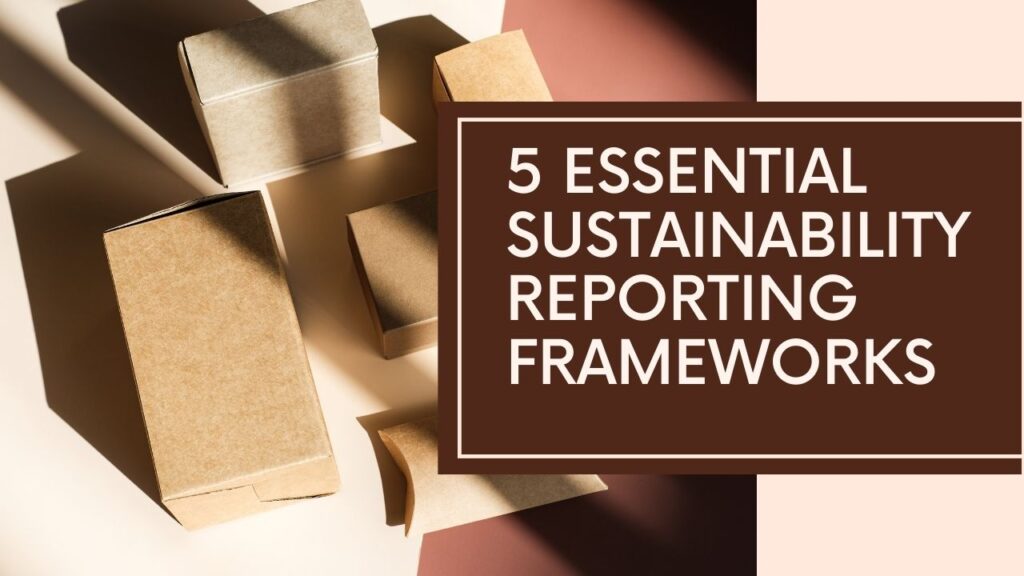Introduction
A company can carry out its operations in a more sustainable way by establishing goals, measuring performance regularly and managing change. This can be done by choosing a correct reporting framework to follow. Converting theoretical issues into definite actions is the primary aim of these reporting frameworks. Sustainability reporting helps in setting priorities that can make way towards accomplishment of environmental and social impact goals. This is because sustainability reporting discloses positive and negative impacts of a company’s operations on nature, society and economy.
Difference between Reporting Frameworks and Standards
It becomes important for companies to understand the difference between reporting frameworks and reporting standards. According to Sustainability Accounting Standards Board (SASB), Sustainability frameworks give principle-based direction about the structure and preparations for reporting and topics to be mentioned in the report. On other hand, Sustainability standards specifies the detailed and reportable requirements that should be included in each topic. This also includes the information about metrics. Sustainability frameworks and standards maintain a balance among each other.
Sustainability Reporting Frameworks
Below mentioned are some commonly used sustainability reporting frameworks that can be effective for an organization:
- UNSDGs – The United Nations Sustainable Development Goals (UNSDGs) are a collection of 17 global goals designed to be a “blueprint to achieve a better and more sustainable future for all.” They cover a broad range of social, environmental, and economic development issues.
- Global Reporting Initiative (GRI): It is a self-regulating organization. It has introduced sustainability reporting since 1997. GRI Standards can be applicable to all types of organizations and sectors. These standards are categorized in various module that covers ESG aspects.
- International Organization for Standardization (ISO): ISO is a non-governmental international organization. It consists of 164 national standard bodies under its membership. Its most important standard termed ISO 14001 is a universal standard describing the requirements of a successful environmental management system.
- Principles for Responsible Investments (PRI): PRI is the world’s biggest supporter of responsible investment. It is supported by the UN. The main aim of this organization is to understand implications of investments according to ESG factors and support the international investor’s s signatories in the incorporation of these factors into their decisions related to investments and ownership. PRI encourages investors to be responsible while investing. It guides investors to enhance returns and manage risks. PRI’s mission is to create an economically efficient and sustainable financial system across the world. Such a system can lead to rewards for long term, responsible investment as well as benefit to the environment and society.
- Sustainability Accounting Standards Board (SASB): This organization was founded in 2011. The prime focus of SASB is on developing standards in relation to information about sustainability for the investors. In other words, it links businesses and investors with the financial features of sustainability. SASB and GRI announced their collaboration at the end of 2020 to maintain transparency and trust among the companies.
- Task Force on Climate-related Financial Disclosures (TCFD): The TCFD is an initiative established to develop recommendations for more effective climate-related disclosures that could help investors, lenders, and insurance underwriters better understand and evaluate the financial impacts of climate change.
- United Nations Global Concept: It is a voluntary initiative taken for those companies who make changes in their business operations and adapt to ten principles of the United Nations Global Concept. This initiative has received more than 62,000 reports from 159 countries.
How to Choose a Correct Reporting Framework
It is a big question for companies how to choose the correct reporting framework; the intent and execution of the standards and protocols are more important than the selection of the correct model. In the current corporate sector, more than 90% of the world’s leading companies submit their reports showing their sustainable impacts. Most companies among these choose to follow GRI standards as they are recognized for their comparativeness and flexibility. However, many companies opt for other reporting frameworks too. Thus, the decision of choosing the framework is made by the companies according to their needs and objectives. This decision is also based on size, location and the consumers to the individual company. Here are some of the factors that should be kept in mind while choosing the correct framework:
- Have knowledge about your industry: A company should study about the frameworks used in its particular industry. The most common frameworks prevalent in the industry should be considered.
- Have knowledge about your competitors: While studying the industry pattern, the company should also look into the frameworks used by its competitors. This can help in setting up higher benchmarks and priorities.
- Have knowledge about your audience:
- Selection of the framework also depends upon the stakeholders of the company. Investors, customers, employees and other stakeholders want to be updated with the information related to ESG. Thus, the primary stakeholdersand their needs can help the company in the selection of framework.
- Have knowledge about regulations: The regulatory authorities tend to change and mandate some rules and regulations on the basis of climate related and other sustainability related disclosures (BRSR disclosures in India). Thus, these rules should also be considered.
Reasons for Variety of Reporting Frameworks
It becomes important to have a variety of reporting frameworks as many companies have started submitting sustainability reports. This makes sustainability reporting a difficult and repetitive procedure. This also leads to absence of transparency and consistency. Thus, many companies have started reporting according to government and standards organizations to avoid the lack of transparency. Also, a variety of reporting frameworks were created for various different purposes. As the big companies use more than one type of framework, the organizations are working towards making the reporting process easier.
Take Away
Here is the detailed explanation about 5 Sustainability Reporting Frameworks and their functions that can help companies in setting priorities. Please let us know through your valuable feedback and the suggestion in the drop box.

